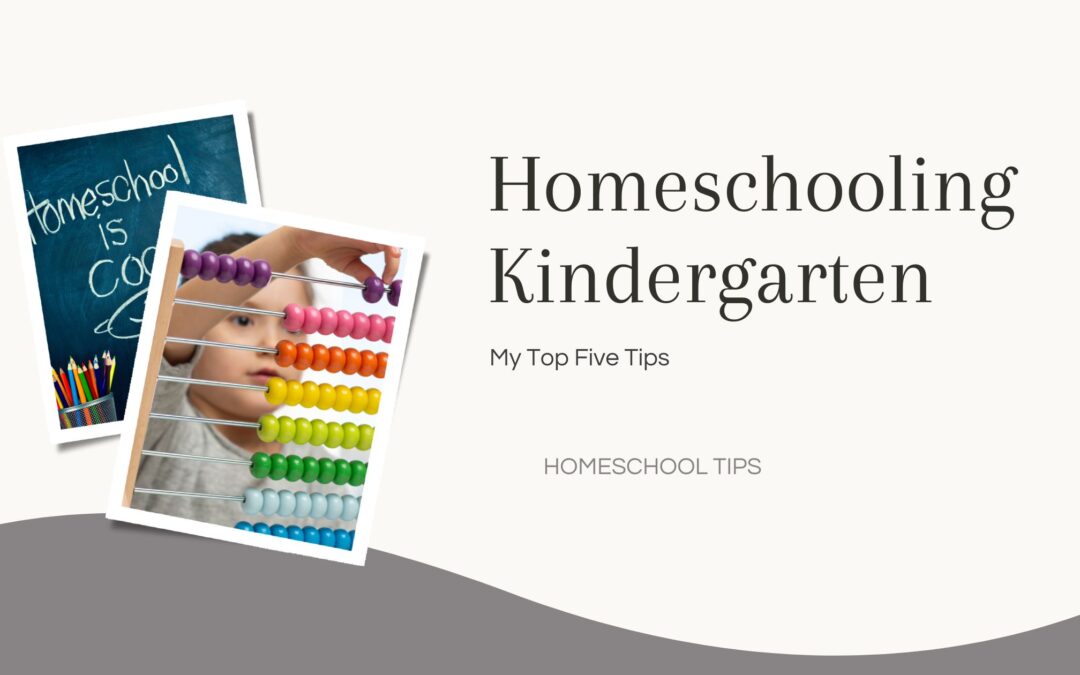This post contains affiliate links, including Amazon associate links. If you purchase through my links, I may be compensated. Thank you for supporting this site! You can read my affiliate and advertising disclosure here.
Lately a lot of people are asking about how to homeschool kindergarten. If you are put in a room with 5 different homeschool moms, you will probably get five different opinions for homeschooling kindergarten. Some believe in starting to teach your kids early, even as young as three or four. Others believe in no formal schooling until much later, ranging anywhere from age six to nine. I don’t have a strong opinion on the matter. My oldest went to a charter school for kindergarten while I homeschooled my youngest with a kindergarten program (you can read a little bit about our kindergarten experience here). Kids’ maturity varies greatly at that age, and as a parent you really have to carefully gauge how much they can handle.
I am not going to go into the benefits or a comparison of late vs. early, or even if you should do a kindergarten year. That’s completely up to you to decide. I am going to share my experience with you and give you some of my best tips for homeschooling kindergarten. These tips apply whether you choose to do a full on formal program, or more of a homegrown learning through life/play approach.
1. Use a Math Curriculum
This is one of those areas where I know people would disagree with me. I even have friends who disagree with me on this point. That’s okay, I’m sharing my experience with you. I am not a mathy person so that is part of what drives my view here. Math is systematic and sequential. You can’t jump into algebra without having a foundation in the basics. Math needs to be taught in order and not haphazardly. Unless you are a super mathy person or have a really good idea of the sequence of teaching math and you can implement those ideas into everyday life, get a math curriculum.
I don’t believe in pushing kids beyond their capabilities. Even while using a math curriculum, you don’t have to push through to complete x amount of lessons per week, month, or year. Use the curriculum as a tool, not a boss. I used Math U See Primer for Peyton’s kindergarten year. It was pretty light and a great introduction. Whatever you choose, I recommend something with a hands on component and short lessons.
2. Do Messy Science Experiments
Kindergarten is a time when you introduce your kids to what school feels like. This is an opportunity to shape positive attitudes and inspire a love of learning. Most kids like to get messy. Even if you don’t do formal science (which is one I would totally skip for kindergarten) get a book of experiments or start a pinterest board and fill it up with ideas for hands on experiments. Baking soda and vinegar NEVER get old. Your kindergartener does not have to learn the “why” behind the experiment. This is more about establishing good attitudes and setting the tone for their school experience than it is about the science. Edible science experiments are always a hit too. Think along the lines of making a solar oven from a pizza box and cooking S’mores. I have boys so food related school is always a hit in my house.
3.Keep Lessons Short
Keep each subject to about 15 minutes max. If you are using formal curricula, it may mean that you don’t complete an entire lesson in one sitting. It’s okay. They won’t be behind if they move to first grade without completing an entire kindergarten program. It all gets reviewed again anyway. This was the hardest thing for me to wrap my head around, and I had to learn this from experience. The only way to ruin kindergarten is by trying to do too much and having them burn out early on, so keep things short and try to wrap up lessons before they lose interest.
Along these same lines, it’s okay to set aside something if they are struggling with it or just having a bad day. Come back to the lesson when they are more receptive and ready to learn. Pushing through doesn’t usually equal learning.
4. Get Outside
This probably comes from me leaning toward a Charlotte Mason homeschool style. Nature Study is awesome for young kids. Go take nature walks and collect things. Get a magnifying glass and discover the different types of bugs that visit your back yard. Play outside. A lot. Kids tend to retain what they’re learning in skills subjects when they have had time outside to play and breathe fresh air. You can even move lessons outside when you feel like it. Don’t feel like homeschooling means being stuck in your home all day. Get outside!
5. Read Aloud
I wrote this post on reading to kids. It is one of the easiest to implement and most beneficial things you can do in your homeschool. For kindergarten, choose a mix of picture books and chapter books. At that age, Mr. Popper’s Penguins was a favorite for my boys. Cover as many subjects that you possibly can through read alouds. Get seasonal books for holidays, including all of those American holidays that don’t necessarily get celebrated. They can learn history just from hearing the stories. We love Around the World with Picture Books and it would be perfect for kindergarten geography/social studies. When you have a day where attitudes and learning are off, grab a book (or ten) and read. When all else fails, read to your kids!
I hope you enjoyed my top five tips for homeschooling kindergarten. If you have any questions about homeschooling your kindergartener (or any grader), feel free to leave a comment, connect with me on social media, or send me an email.

